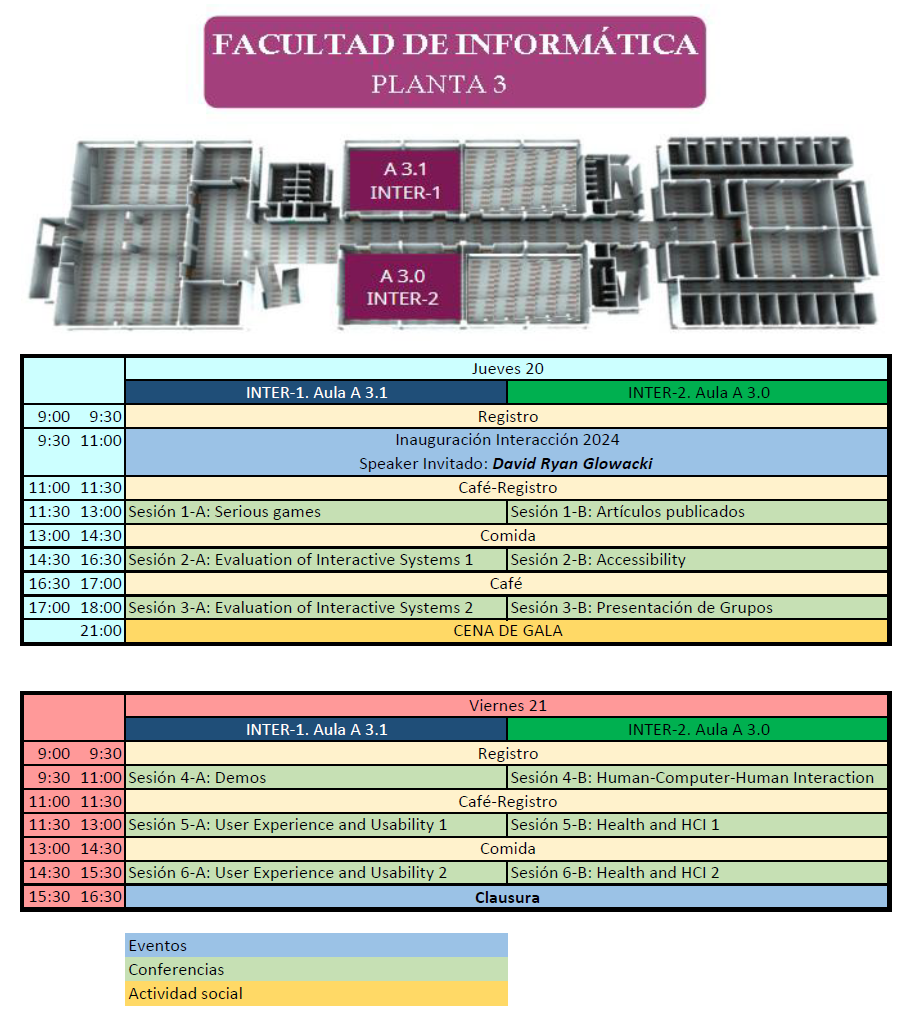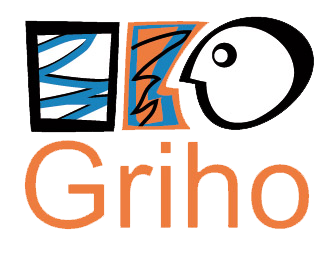Interacción 2024
Reglas para las presentaciones
Artículos Largos (L)
- Los artículos largos tienen una extensión máxima de 8 páginas.
- Los autores que presenten el trabajo de investigación, disponen de 15 minutos de exposición y 5 minutos de preguntas.
- En el programa se indican con el símbolo (L)
Artículos Cortos (C)
- Los artículos cortos tienen una extensión máxima de 4 páginas.
- Los autores que presenten el trabajo de investigación, disponen de 10 minutos de exposición y 5 minutos de preguntas.
- En el programa se indican con el símbolo (C)
Artículos Relevantes
- Artículo publicado en una revista de impacto para difundirlo entre la comunidad asistente en el congreso.
- Los autores que presenten el trabajo de investigación, disponen de 10 minutos de exposición y 5 minutos de preguntas.
Proyectos y grupos
- Un grupo de investigación que trabaje en alguno de los ámbitos abarcados por el congreso puede realizar una presentación de su trabajo como grupo, describiendo actividades, proyectos y planes de futuro
- Un proyecto de investigación concreto que estén llevando a cabo o acabe de concluir.
- Los autores que presenten el trabajo, disponen de 10 minutos de exposición y 5 minutos de preguntas.
Demostradores
- Presentación de la demostración de una herramienta, un hardware, una instalación de arte interactivo o similar
- Los autores que presenten demostradores dispondrán de una mesa, conexión a internet y una toma de corriente.
- Las demos se presentarán en una sesión en paralelo tipo póster.
- Los autores podrán utilizar el apoyo de un poster con tamaño máximo de A1.
Speaker Invitado

David Ryan Glowacki.
Intangible Realities Laboratory, Citius Intelligent Technologies Research Centre, Santiago de Compostela, Spain www.theirl.org.
David Glowacki is a cross-disciplinary researcher, artist, author, and activist whose interests span computer science, nanoscience, aesthetics, cultural theory, & spirituality. He has worked extensively in scientific simulation, and more recently in VR applied to interactive scientific simulation and visualisation. He is the founder of the ‘Intangible Realities Laboratory’ (IRL), a research group working at the immersive frontiers of scientific, aesthetic, computational, and technological practice. He is the recipient of several research awards, including a Royal Society Research Fellowship, Philip Leverhulme award, ERC grant, SIG-CHI best paper award, and more. His immersive digital artworks have been experienced by more than 200,000 people on three continents. Originally from Milwaukee, he graduated from University of Pennsilvania in 2003, where he studied a range of subjects, including chemistry, mathematics, philosophy, comparative literature, and religions. In 2004 he obtained an MA in cultural theory as a Fulbright finalist at the Manchester University (UK). In 2008, he completed a PhD in molecular physics at Leeds University (UK). He has published across several domains, including classical & quantum molecular dynamics, computational biochemistry, human-computer interaction, high-performance computing, computer graphics, evolutionary algorithms, machine learning & data science, digital aesthetics, interactive computational art, religion & power, cultural theory, optics, and scientific instrument development.
Exploring intangible realities using virtual reality: From molecules to numadelics
In 1977, artificial and augmented reality (AR) pioneer Myron Krueger began his paper “Responsive Environments” with the observation that “human-machine interaction is usually limited to a seated (person) poking at a machine with (their) fingers or perhaps waving (their) hands over a data tablet.” Krueger went on to speculate that real-time, multisensory interaction between humans and machines might enable exciting and efficient new approaches for exploring realities which are difficult to visualize. Even earlier in 1965, the VR pioneer Ivan Sutherland outlined how immersive display technologies like virtual reality (VR) would provide new ways to perceive and understand the physics of scientific domains for which we lack intuition. The nanoscale is a good example of such a domain: because it is inaccessible to our conventional sensory organs, we must construct aesthetic projections that our brains can effectively parse and process in order to understand its behavior. In this presentation, I will provide an overview of how cloud computing and virtual reality are enabling new approaches to nanoscale scientific research, enabling us to visualize realities which are otherwise imperceptible, and interact with realities that are otherwise intangible. For example, I will illustrate how new VR and AR tools that combine the state-of-the-art in human computer interaction (HCI) and high performance computing (HPC) enable groups of researchers distributed across the world to simultaneously cohabit real-time simulation environments and interactively build, inspect, visualize, and manipulate the dynamics of complex molecular structures with atomic-level precision, with applications to areas that include biochemistry, nano-science, and science education. I will outline recent work using VR to carry out psychophysics studies to understand human perceptual thresholds, and also to train artificial intelligence agents to undertake 3d molecular manipulation tasks. Finally, I will illustrate how such cloud-mounted VR tools are being used in psychiatric contexts: specifically to develop so-called ‘numadelic’ experiences which have the potential to offer therapeutic and mental health benefits that appear statistically indistinguishable from moderate to high doses of psilocybin, a serotonergic psychedelic drug that is being used to treat anxiety, depression, and addiction.








